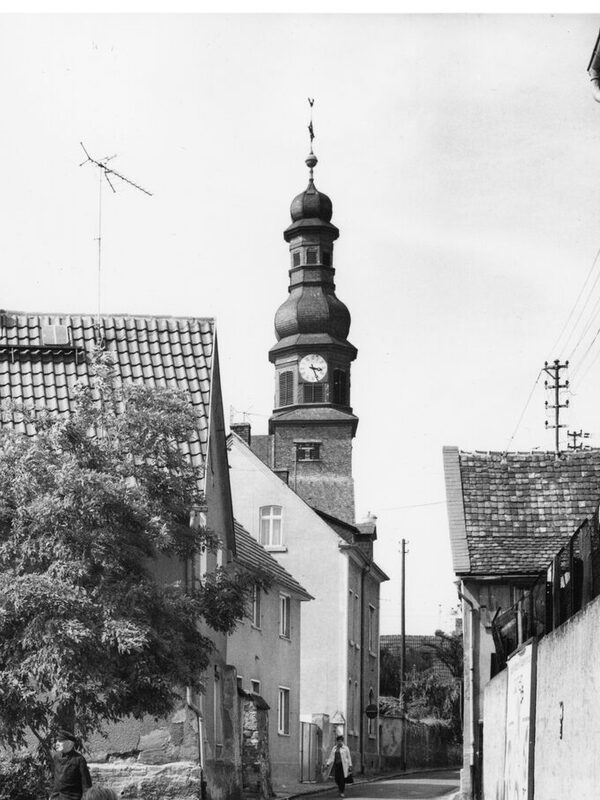Schierstein
The history of Schierstein stretches far back into the past, as evidenced by Neolithic, Roman and Frankish finds. The most spectacular archaeological evidence is the Jupiter Giant Column from 221 A.D. The town was first mentioned as Skerdesstein around 973. The name is interpreted as "Stone of Sherto", whereby "stone" is to be interpreted in the sense of a fortified building.
There must have been a parish church in Schierstein in the 9th century at the latest. The tithe farm and the royal church are relics of properties that once belonged to the imperial estate. Later, the monasteries and convents of Mainz and the monasteries of Tiefenthal and Eberbach from the Rheingau gained a foothold here. The local nobility founded several knights' residences in Schierstein; the Counts of Nassau had sole sovereignty over the town and incorporated Schierstein into their dominion of Wiesbaden from the 12th century. Bailiwick and jurisdiction in Schierstein were held by the Lords of Eppstein around 1200, who still owned the town in the 15th century. In 1275, Schierstein had a cent court consisting of the mayor and seven aldermen. Schierstein converted to the Reformation in 1547. The oldest records of a school opposite the vicarage date back to this time. Due to its convenient location, the village was repeatedly ravaged by passing troops, which at times led to a striking decline in population. In 1654, the community only had around 50 inhabitants. 100 years later, over 600 people once again lived in 99 houses, and in 1880, 268 houses and 2,132 people were counted. The old church building at the Zehntenhof was demolished in the middle of the 18th century after a partial collapse in 1732 and replaced by St. Christopher's Church in 1754. The Catholic Church of St. Peter and Paul, the Evangelical Resurrection Parish and the Apostolic Parish of Wiesbaden were built more recently.
An important investment in the future of the local economy in the mid-19th century was the construction of the Schierstein port. On 11.08.1856, the town was connected to the Wiesbaden-Oberlahnstein railroad line. Schierstein was incorporated in 1926. Viticulture and agriculture have always been the main economic activities in the district, which is distinguished by its fertile soil. There is evidence of viticulture in Schierstein from 973 to the present day. The 19th century saw the establishment of industrial enterprises, including the Söhnlein sparkling wine cellars (Rheingold) and the Daalen & Loos glyco-metal works.
With a predominantly working-class population, the municipality tended towards the left-wing parties during the Weimar period. However, the NSDAP also gradually achieved a majority in Schierstein from 1928 onwards. During the Reich Pogrom Night in November 1938, the Schierstein synagogue, inaugurated in 1890, was destroyed and the homes and stores of Jewish residents were desecrated, the last eight of whom were deported to the extermination camps in 1942.
Today (as of 01.01.2015), 30.7% of the 10,203 inhabitants in 5,173 households have a migrant background; 22% of them come from Turkey and 16.6% from Greece. There is a lively club life in Schierstein. In addition to the Turngemeinde Schierstein 1848, there are several soccer clubs, the Freie Turnerschaft Schierstein 1913 and the Wassersportverein Schierstein 1921. In recent years, Schierstein harbour has also developed into one of the German centers of dragon boating. Schierstein has been home to an important leisure facility since 1914 with its lido covering over 2 hectares on the western tip of the Rettbergsaue.
Literature
Mischewski, Günter: 50 years of Wiesbaden-Schierstein 1926-1976. Verkehrsverein Wiesbaden-Schierstein e.V. (ed.), Wiesbaden 1976.
Struck, Wolf-Heino: 1000 years of viticulture in Wiesbaden-Schierstein. On the history of wine culture in an urbanized zone on the edge of the Rheingau. Writings on the history of wine. Society for the History of Wine (ed.), No. 32, Wiesbaden 1973.

